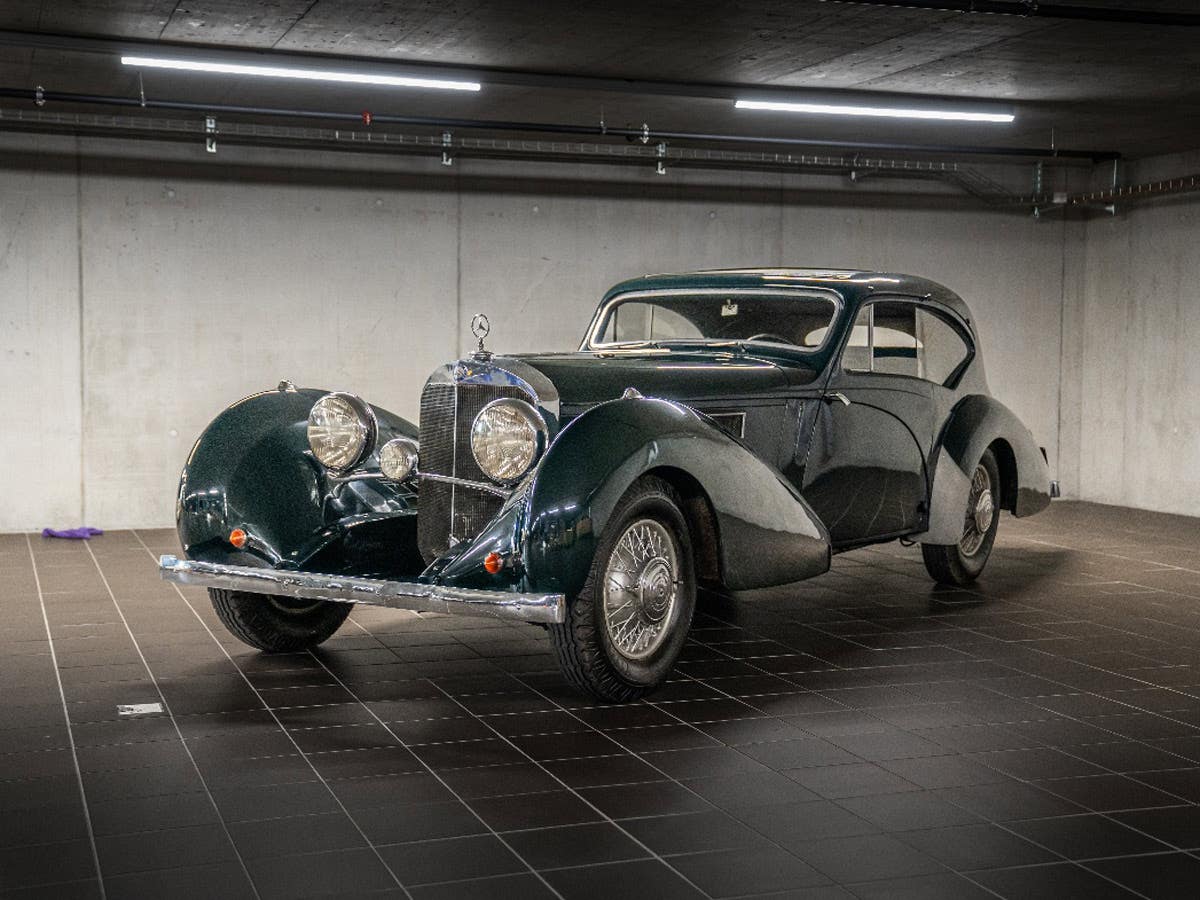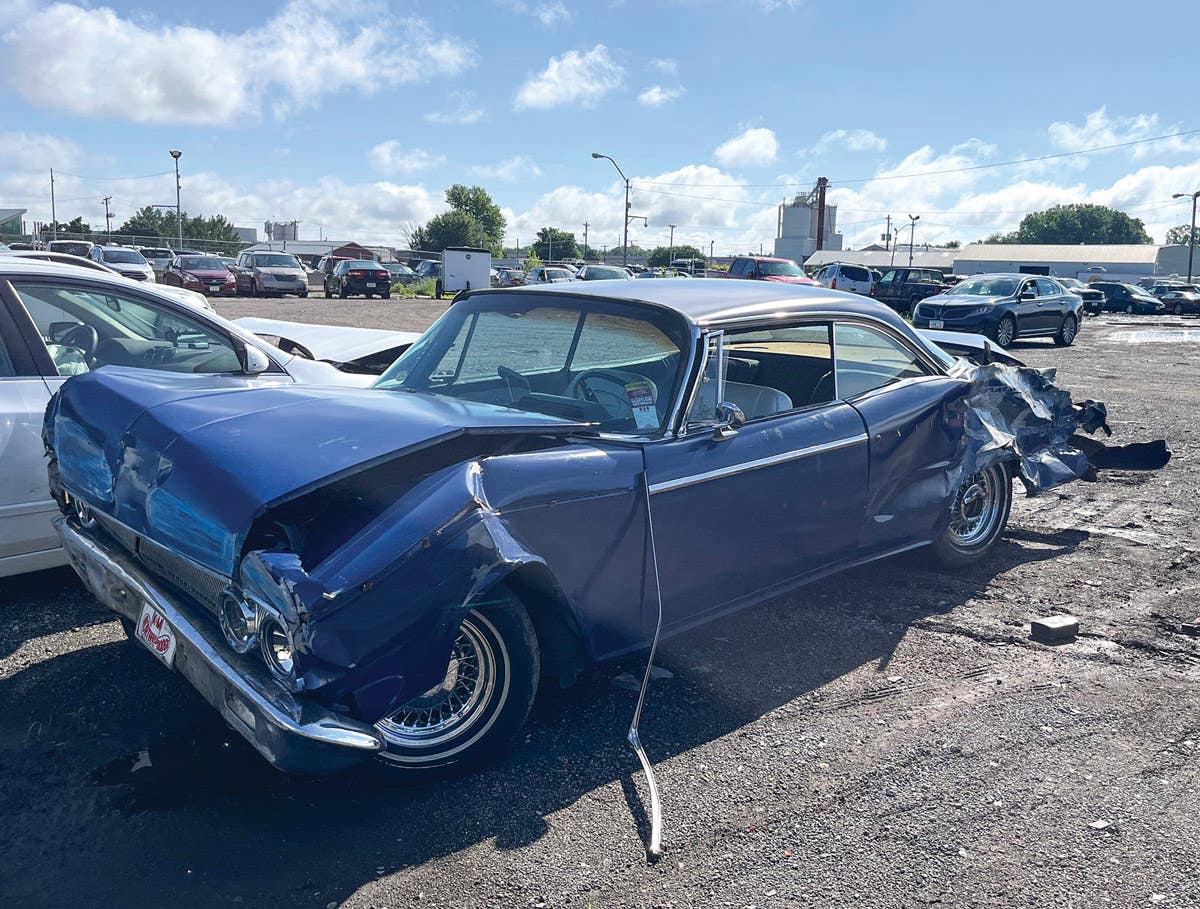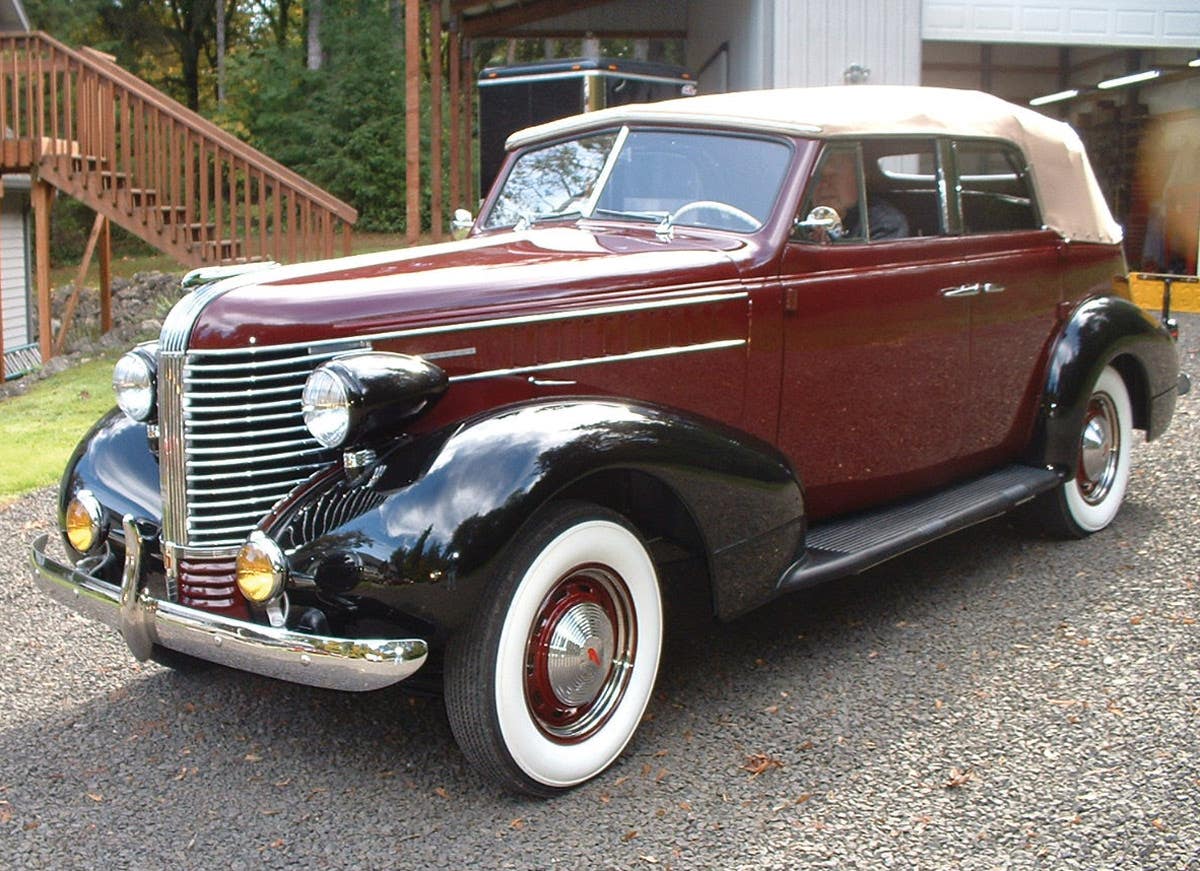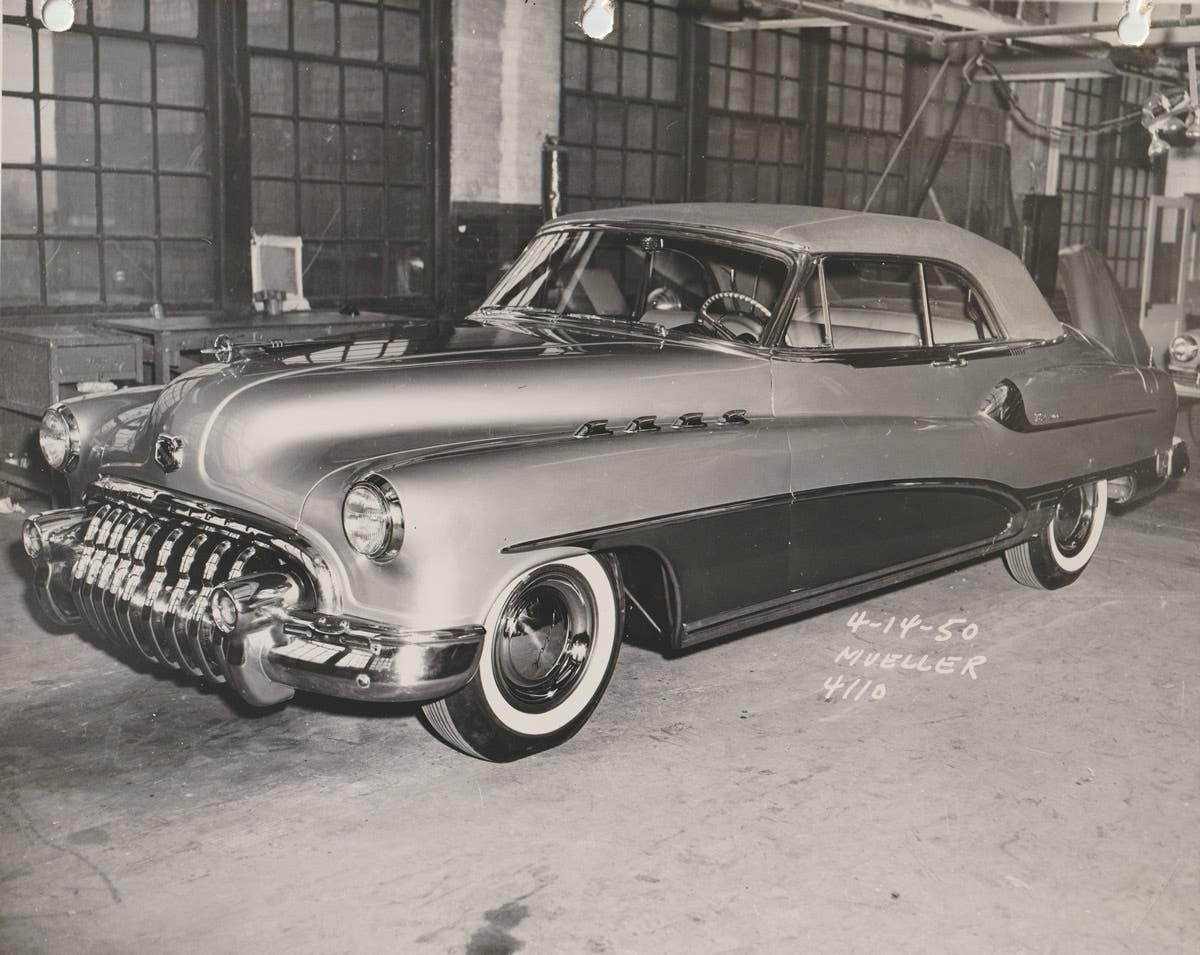By John Gunnell
When the Muscle Car and Corvette Nationals hosted the unveiling of an original Bill Thomas A/FX Chevy Nova funny car at the Donald E. Stephens Convention Center in Rosemont, Ill., car owner John Tinberg was there.
Tinberg is the technical advisor for Nickey Chicago but hails from Dwight, Ill., where he lives in a 1930s Dodge dealership. He and the Nickey Chicago crew spent countless hours researching Thomas’ legendary car-building techniques to ensure the Nova was restored right.
The original Bill Thomas Nova appeared in Popular Hot Rodding and Hot Rod magazine back in the day. Tinberg’s acquisition of the original car was the culmination of a 40-year dream — an idea that began in a foxhole in the central highlands of Vietnam. Prior to obtaining the real Bill Thomas car, however, Tinberg built himself the silver-blue “buggy” that you see here.
Notion for Novas
Tinberg’s Nova passion was inspired by a parts catalog that he read while slogging it out in Vietnam. Even with a war going on around him, the Illinois soldier had scored a copy of a Nickey Chevrolet catalog. Chicago-based high-performance Chevrolet dealer Nickey had teamed up with Bill Thomas — an Anaheim, Calif., Chevrolet dealer — to sponsor drag racer Dick Harrell in a big-block ’65 Nova that did the quarter-mile in no time flat.
The story of that nasty Nova struck a chord with Tinberg. His first car had been an Impala SS with the legendary 409-cube engine and dual four-barrel carbs. He bought this beast from his brother Art when Art was drafted in 1964. Tinberg ran the car consistently at U.S. 30 Dragstrip in Indiana. On one of Tinberg’s trips there, he saw Harrell rip up the pavement with his 396-cid Chevy II funny car. That was his first inspiration to own such a Nova.
Tinberg had also read a Hot Rod magazine article about a mail-order kit Bill Thomas designed to help performance junkies build a Chevy rat-powered match-racing car based on any 1962-’67 Nova. Writer Jim McFarland wrote a story called “A Novel Nova” that introduced Thomas’ “Instant Funny Car” kit. Included were a fiberglass front end for $295 and a complete bolt-on straight-axle setup for $395.
From dream to reality
After the war, Tinberg returned home and started a successful concrete business. His funny car-building dreams were put on the shelf until 2000 when he read another Hot Rod article titled “Ramming the Rat.” It featured an altered-wheelbase Nova called “The Wilshire Shaker” that revived his Nova dream. It didn’t take long for Tinberg to locate a bare ’63 Nova body without a front clip, no front or rear suspension and no rear axle — just the type of car he needed to make his copy of the Bill Thomas/Nickey type altered-wheelbase drag cars.
Tinberg remembered packing the copies of the Nickey catalog and the 1966 issue of Hot Rod away in his basement. He found them wrapped in plastic inside a cardboard box. The fiberglass nose and straight-axle kits were no longer available, so Tinberg fabricated them from scratch. Using the old article as a guide, he built up a car that came within a quarter inch of the original specifications.
The front suspension was moved 3 inches forward and the rear axle was mounted 8 inches ahead of its stock position. Tinberg built a set of Thunderbolt lift bars and a pair of wheelie bars, but this was high-buck project. He wanted the thin-shell racing buckets that folks used in the ’60s. Not wanting to use Ford Econoline buckets like everyone else, Tinberg found just what he wanted in a construction equipment yard. The seats came from a worn-out forklift, and not only were they just right, they were also cheap.
Since carpeting didn’t look right in a race car, Tinberg searched for rubber mats like those General Motors used in the ’60s. He found rubberized industrial matting on a website and it was exactly what he needed. He added an 8-point rollcage covered with taped-on foam, then mounted a period-correct Sun tach on the dashboard, even though it is non-functional. A working Auto Meter Monster tach is less obvious, hidden behind the left side of the steering column.
The engine bay is old-school, although there is hidden modernization in the drivetrain. Fat tube headers run through 3-inch exhaust pipes to Flowmaster dual-chamber mufflers. Tinberg sweated the details, such as hiding the brake booster inside a small black Craftsman toolbox behind the driver’s seat. “You can’t have a power brake booster on the firewall of an A/FX funny car,” he said.
At the front of the car, 4.5 x 15-inch tires are mounted on five-spoke wheels. A pair of 8.5 x 15 slicks are seen at the rear. They are carefully selected M/T Radar “pie-crust” racing slicks that are patterned after a mid-’60s design. Tinberg added silver-blue paint, Nickey door graphics and period 396-cid engine call-outs.
Then, he rumbled over to the U.S. 41 drag strip near Chicago to give the Nova a couple of test runs. The car turned a 10.99 at 123 mph with M/T slicks, 3.23:1 highway gears and no special strip tuning. Tinberg’s dream car put him in dreamland that day.
Having a gas
Since completing his first Nova and then acquiring the real Bill Thomas Nova, Tinberg has specialized in building gasser-style cars for Nickey Chicago, which then sells them. After cranking out a number of “high and mighty” 1955-’57 Chevys, Tinberg did a gasser-style ’62 Corvette. His latest project was a vintage Chevy pickup with Nickey door graphics that he now uses to pull his first Nova funny car to nostalgia racing events. How cool is that?
The only thing better would be if this “muscle car” edition of Old Cars Weekly finds its way to service personnel fighting in a distant land and inspires those who read it to get into the collector car hobby.
Take it from John Tinberg: a story like that can have a long-lasting impact on life.







